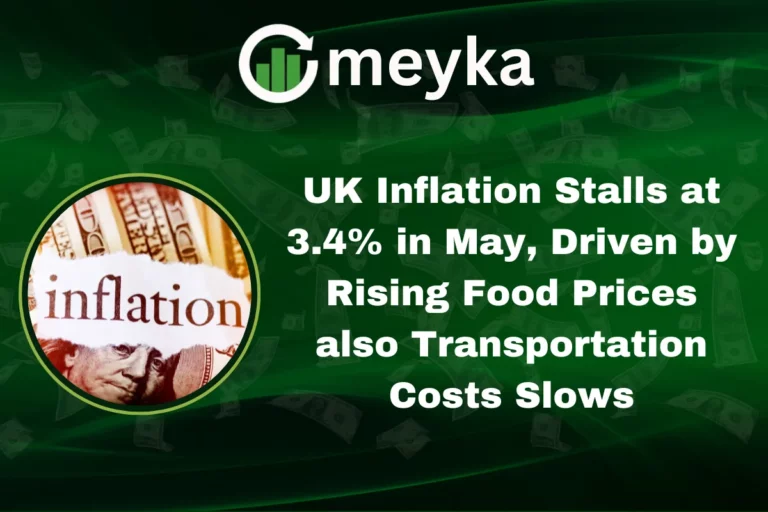UK Borrowing Jumps to Highest Level Since 2020 Amid Rising Interest Costs
In recent months, UK borrowing has surged to the highest level since the peak of the pandemic, driven by rising interest costs, inflation-linked benefits, and sluggish tax growth. This sharp increase in government borrowing raises serious questions about fiscal sustainability, impacts on public services, and the broader economic outlook.
What is UK Borrowing and Why It Matters
When the government spends more than it collects in taxes and other receipts, it must borrow to plug the gap. In the UK, this is measured by metrics such as net public sector borrowing. According to the latest bulletin from the Office for National Statistics (ONS), borrowing for September 2025 reached £20.2 billion, the highest September figure since 2020.
More strikingly, borrowing for the financial year to September stood at £99.8 billion, up £11.5 billion (13.1 %) from the same period a year earlier. Why should this matter to you? Because high borrowing means higher debt, higher debt servicing costs (interest payments), less room for spending on public services, and often greater risk of tax rises or spending cuts down the line.
Key Drivers of the Borrowing Surge
Rising interest costs
A major driver has been the increase in interest payments on government debt, especially index-linked debt. The ONS bulletin notes that central government interest payable rose by about £14.4 billion to £59.5 billion in just six months (to September), owing largely to inflation-linked increases. Higher interest costs mean spending more just to service debt, leaving less for other priorities.
Inflation and benefit costs
Inflation has driven up pay costs in public services and increased benefit payments (e.g., the state pension or Universal Credit) that are indexed to earnings or prices. For example, ONS data show net social benefits paid increased by £9.5 billion over the same period. When inflation is high, it pressures both spending and borrowing.
Tax revenues are not growing fast enough
Although tax receipts increased (income tax, VAT, and corporation tax all rose) the increase in revenues was not enough to offset the rise in spending and interest costs. For September, tax and other receipts increased by 8.6 % but were still insufficient. In simple terms, even though the government collected more, the costs rose even faster.
Sluggish economic growth and structural pressures
The broader UK economy is still facing headwinds: weak productivity growth, uncertain business investment, and the tailwinds of higher borrowing and debt servicing. The combination means borrowing is likely to remain elevated unless policy changes. Experts from organisations such as the Institute for Fiscal Studies have warned that he upcoming Budget will need to plug a fiscal gap of tens of billions.
Consequences of the Borrowing Spike
- Reduced fiscal headroom: With borrowing significantly higher than projected, the government’s flexibility to respond to future shocks is limited. The ONS reports borrowing in the half-year was £7.2 billion above forecasts.
- Pressure on public services and investment: As more revenue goes to debt interest, less remains for schools, hospitals, and infrastructure. This may force trade-offs that impact long-term growth and service delivery.
- Potential for higher taxes or spending cuts: To balance the books, the upcoming Budget is likely to include tax increases or major spending constraints. Analysts believe a tax-raising package of around £20-30 billion may be required.
- Impact on the sovereign debt market: High borrowing and interest costs can affect yields on UK government bonds (“gilts”) and raise borrowing costs further, a vicious circle.
- Implications for investors and stock markets: While this article is not focused on equities, investors in sectors such as AI stocks or growth stocks should be aware that high government borrowing may crowd out private investment, raise interest rates and affect market sentiment. For those doing stock research, the fiscal backdrop becomes another macro variable to monitor.
What This Means for the Future of UK Borrowing
Looking ahead, we believe several important dynamics will shape the trajectory of UK borrowing:
- Sticky interest and inflation costs
If inflation remains elevated or interest rates stay high, the burden of debt servicing will remain large. The ONS notes that index-linked interest paid rose sharply because of the Retail Prices Index. - Need for growth-boosting reforms
Borrowing alone isn’t the answer; the UK needs faster economic growth to generate more tax revenue and reduce the debt-to-GDP ratio. Otherwise, borrowing becomes less sustainable. - Fiscal policy balancing act
The government must balance between supporting public services and growth, while addressing the borrowing gap. The upcoming Budget will be key. - Monitoring of debt-to-GDP levels
Public sector net debt (excluding public sector banks) is estimated at 95.3 % of GDP at the end of September 2025, levels last seen in the early 1960s. High debt relative to GDP means the economy is more vulnerable to shocks. - Implications for the private sector and markets
Private sector funding may become more expensive if interest rates stay high. Businesses, including those looking into AI stocks and growth sectors, must carefully monitor macro-fiscal conditions, as higher sovereign risk can ripple into markets and investor sentiment.
Key Takeaways: UK Borrowing and You
- UK borrowing has reached a five-year high, with borrowing of £20.2 billion in September alone and nearly £100 billion so far in the year.
- The spike is driven by higher interest costs, inflation-linked spending, and slower revenue increases.
- The fiscal outlook is tight: fewer options, more pressure. For investors, including those researching AI stocks or broader stock market trends, the government’s borrowing and fiscal position add an important macro dimension to watch.
- Growth is the key: without higher growth, borrowing reduction is harder, and any tax or spending changes carry risks for the economy.
Conclusion
The sharp rise in UK borrowing spells a clear warning: even with tax receipts rising, the cost of funding government debt and servicing obligations is eating into fiscal flexibility. For the UK, the road ahead involves difficult choices: ensuring growth, managing spending, and avoiding burdensome tax rises, all while navigating a fragile global and domestic economic environment.
For informed investors and citizens, understanding these fiscal dynamics is essential, whether you’re looking at stock research in sectors like AI or simply tracking how national finances might affect the economy.
FAQs
Because of a combination of higher interest payments, inflation-linked benefits and pay increases, and tax receipts that rose but not enough to offset the spending surge. The ONS reports borrowing of £20.2 billion in September and £99.8 billion in the fiscal year to date.
High borrowing can lead to higher taxes or reduced public services in the future, increased borrowing costs that may spill into higher interest rates for households and businesses. It may crowd out private sector investment which can slow economic growth.
From a stock-market perspective, high government borrowing and fiscal strain can raise interest rates, reduce investment incentives, and temper growth expectations, all of which matter for growth-oriented sectors like AI stocks. Doing robust stock research means paying attention not just to company fundamentals, but macro-fiscal conditions too.
Disclaimer:
This content is made for learning only. It is not meant to give financial advice. Always check the facts yourself. Financial decisions need detailed research.






